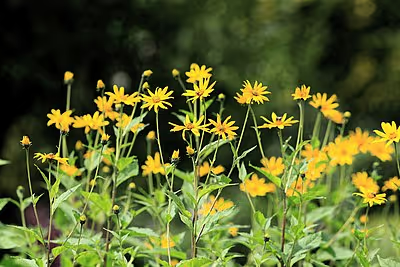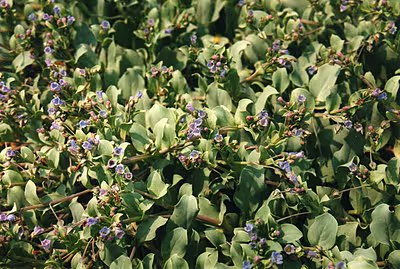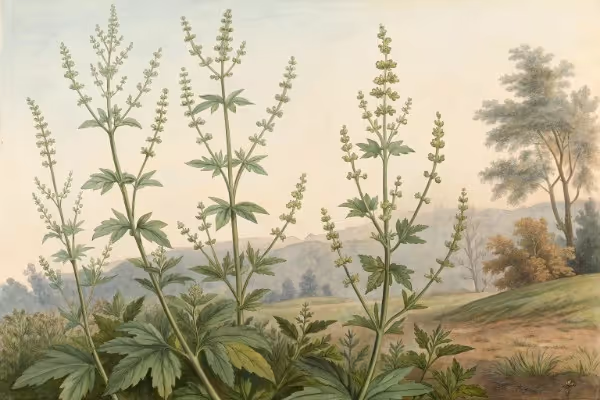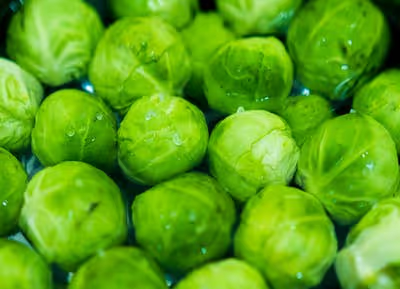Growing Spinach: How to Plant, Grow, and Harvest Fresh Greens
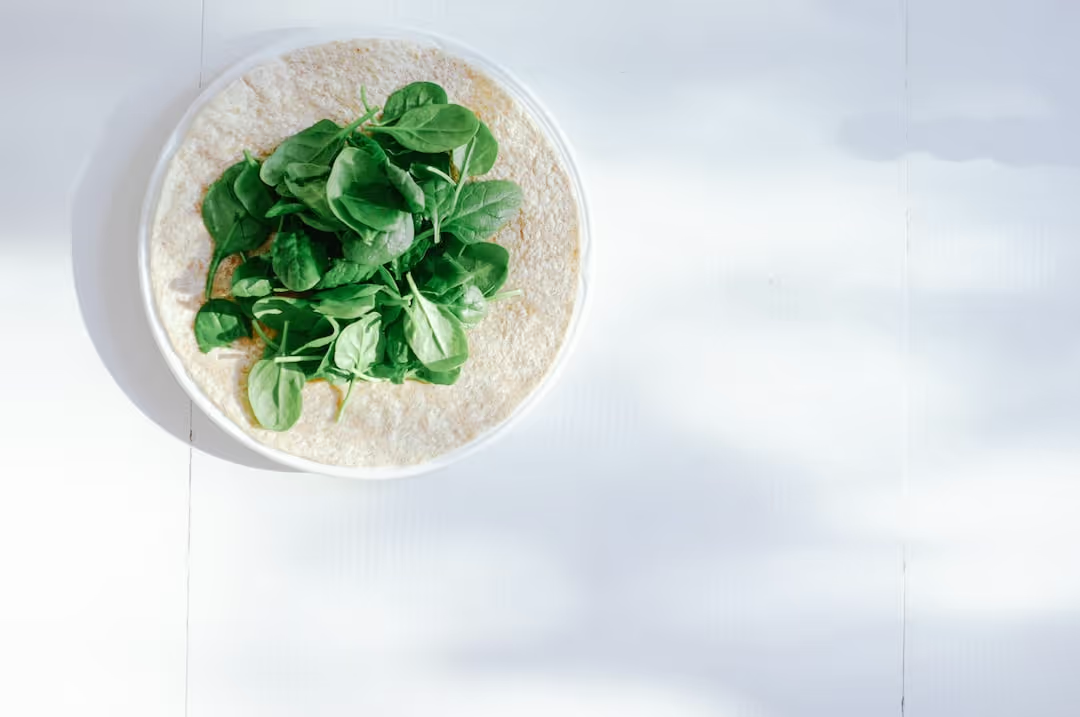
Growing Spinach
Growing spinach rewards the gardener who plants early, waters consistently, and harvests young. Begin growing spinach by sowing seeds directly in loose, fertile soil when temperatures are reliably cool—between 40°F and 60°F—and choose a sunny bed that drains well. To prevent bitterness, keep plants consistently moist and pick tender leaves regularly, which also encourages prolonged production. Follow along for simple tips that turn leafy greens into bold garden fare.
Cheatsheet: Spinach Planting & Picking Guide
🌱 Planting Basics
- Sow direct: Early spring or fall, 4-6 wks before/after frost.
- Sow depth: ½ in (1.3 cm). Space: 1 in (2.5 cm) apart.
- Rows: 12-18 in (30-45 cm) apart.
- Preferred temp: 50–70°F (10–21°C).
- Germinates in 7-10 days.
Work soil to 6 in (15 cm) deep. Mix in compost. Plant seeds per above spacing.
💧 Water, Fertilizer & Care
- Keep soil moist, not soggy.
- Mulch thinly to cool soil & retain moisture.
- Thin seedlings to 3 in (7.5 cm) apart when 2 in (5 cm) tall.
- Optional: Side-dress with compost or 5-10-10 fertilizer midseason.
- Supports rapid regrowth after cuttings.
Water weekly—1 in (2.5 cm). Thin plants. Weed by hand, avoid root damage.
☀️ Sun & Site
- Full sun (cool months), partial shade (late spring/summer).
- pH 6.5–7.5 for best growth.
- Rotate crops yearly to limit pests.
Select a spot with good drainage and proper sunlight for the season.
✂️ Harvest & Storage
- Ready to cut: 5–7 wks after sowing, when leaves reach 3–4 in (8–10 cm).
- Pick outer leaves first; allow regrowth.
- Bolting (flower stalk): Harvest entire plant before leaves turn bitter.
- Store unwashed in fridge; use within 1 week for peak nutrition.
Snip or pinch mature leaves or whole plant early morning for freshness.
🧰 Tools and Products You'll Need
- Garden trowel
- Compost or balanced fertilizer (5-10-10)
- Mulch (straw, leaf mold)
- Scissors or garden snips
- Spinach seeds (choose true-leaf or savoy type)
- Watering can or drip hose
🌟 Nutrition & Self-Sufficiency
Spinach packs high iron, vitamin K, folate. One 10-ft (3 m) row yields enough for 20+ salads. Reliable, quick microgreen source in cold frames or containers. Supports year-round homegrown nutrition.
📈 Stat to Know
Spinach yields up to 7x more edible greens per square foot than lettuce.
-
Growing Spinach: How to Plant, Grow, and Harvest Fresh Greens
I grow spinach for speed, flavor, and the smug joy of a salad picked twelve minutes before dinner. The trick is timing, cool soil, and a little street smarts.
Site and soil that keep spinach happy
Growing Spinach starts with loose, fertile soil that drains fast but holds moisture. Aim for pH 6.5 to 7.5 and lots of organic matter.
- Work in 1 to 2 inches of finished compost, then rake a fine seedbed.
- Soil temperature sweet spot for germination sits at 45 to 68 F (7 to 20 C).
- Raised beds warm early and shed spring rain, which cuts damping-off losses.
- Spinach loves nitrogen, so feed modestly and often rather than in one dump.
- Test soil every other year and correct pH with lime or sulfur as needed.
Strong start: spinach germination drops sharply above 80 F (27 C). Source: University of Minnesota Extension and UC ANR vegetable guides.
Timing and sowing that actually work
Direct sow as soon as soil can be worked in late winter or early spring, and again in late summer for fall. I hedge with weekly succession plantings for a steady cut.
- Sow 0.5 inch deep (1.25 cm), rows 12 to 18 inches apart (30 to 45 cm).
- For baby leaf, seed thick, about 30 to 40 seeds per foot; thin to a carpet.
- For full heads, thin to 4 to 6 inches (10 to 15 cm) in-row.
- Germination runs 5 to 10 days in cool soil, faster under row cover.
- Priming trick: soak seeds 8 to 12 hours in cool water, drain, chill 24 hours, then sow.
Heat, daylength, and bolting control
Spinach hears the lengthening day like a drumbeat, then throws a flower stalk. Heat speeds the exit, so I plant early, shade late, and water steadily.
- Use 30 to 40 percent shade cloth once daytime highs top 80 F (27 C).
- Keep soil moisture even, about 1 inch per week (25 mm), more in sand.
- Choose bolt-resistant varieties for late spring and fall sowings.
- Stop stress swings, which push bitter flavor and fast bolting.
Water and feeding without fuss
Shallow roots need frequent, light irrigation. I fertigate with fish or a 3-1-2 ratio feed at first real leaf, then again two weeks later.
- Mulch lightly with clean straw or shredded leaves to cool the soil.
- Avoid overfeeding late, which can raise leaf nitrate levels.
Varieties I trust for Growing Spinach
- Bloomsdale savoy: heirloom flavor, crinkled leaves, spring and fall star, 40 to 48 days.
- Space semi-savoy: tidy plant, easy wash, baby or bunching, 38 to 45 days.
- Tyee semi-savoy: holds well before bolting, handles chill and shoulder seasons.
- Corvair smooth: baby-leaf workhorse with downy mildew resistance, 37 to 40 days.
- Gazelle smooth: high resistance stack to multiple downy mildew races, quick baby leaf.
- Giant Winter smooth: overwintering frames and tunnels, thick leaves in late winter.
- Red-stemmed selections for salad mix pop, usually baby leaf only.
For warm months, I pivot to cousins. New Zealand spinach and Malabar spinach handle heat but live in different botanical neighborhoods and taste slightly nuttier.
Pests and diseases, solved
I keep spinach clean with barriers, sharp scouting, and fast sanitation. Chemicals stay on the bench until cultural fixes get a fair shot.
- Leafminers: cover beds with fine insect netting from sowing, pinch out eggs on undersides, remove damaged leaves fast.
- Aphids: blast with water, then use insecticidal soap or oil, hit undersides, respect preharvest intervals.
- Slugs: trap with boards, use iron phosphate baits, water at dawn, keep mulch thin.
- Damping-off: sow shallow in warm, airy soil, avoid overwatering, rotate out of spinach/beet beds for 3 to 4 years.
- Downy mildew (Pfs): pick resistant varieties and rotate; vent tunnels; water early so leaves dry.
Downy mildew remains the most serious disease of spinach worldwide. Source: UC Statewide IPM Program and Cornell vegetable pathology notes.
Harvest like a pro
Baby leaf starts at 25 to 30 days, full size at 35 to 50. I pick in cool morning and move the harvest into shade within minutes.
- For cut-and-come-again, harvest outer leaves and leave the crown.
- For whole plants, cut 1 inch above the crown to spark a second flush.
- Wash in cold water, spin dry, chill fast at 34 to 38 F (1 to 3 C).
Washing, storage, and freezing
Clean leaves keep longer and taste brighter. I use two rinses, a salad spinner, then pack in a clamshell lined with paper towels.
- Stored at high humidity near 34 F (1 C), spinach holds 7 to 10 days.
- For the freezer, blanch 90 seconds, chill in ice water, squeeze dry, then pack.
Per 100 g raw, spinach provides about 2.7 mg iron, 194 mcg folate, and 483 mcg vitamin K. Source: USDA FoodData Central.
Containers and small-space Growing Spinach
Spinach behaves in pots provided consistent moisture and cool roots. I use 8 to 10 inch deep containers with a peat-free, compost-rich mix.
- Plant 8 to 10 seeds per 12 inch pot for baby leaf, thin with scissors.
- Water daily in warm spells and tuck pots in afternoon shade.
- In apartments, add a full-spectrum LED at 12 to 14 hours during short days.
Season extension that pays for itself
Row cover is my insurance policy. A light fabric buys a few degrees, blocks insects, and smooths wind stress.
- Use 0.5 to 0.6 oz fabric for spring and fall, double it for hard snaps.
- Low tunnels and cold frames push harvest into winter, even at 12 F to 20 F (-11 C to -6 C) nights.
One March, a double-covered ‘Giant Winter’ patch shrugged off a surprise 18 F (-8 C) dawn and tasted sweeter for it. Cold cures spinach like a chef cures bacon.
Year-round plan for Growing Spinach
- Late winter to spring: sow every 7 to 10 days until highs hit the upper 70s F (24 to 26 C).
- Late summer: resume when nights drop below 65 F (18 C); use shade cloth at noon.
- Fall: plant heavier, protect with row cover, harvest into early winter.
- Winter: in zones with frost, use tunnels; pick on sunny late mornings when leaves are thawed.
Companions and rotation
Spinach plays well with radishes, scallions, and quick lettuces. Keep it out of beet and chard beds in a rotation to dodge soil problems.
- Follow heavy fruiting crops with spinach to exploit residual fertility.
- Avoid planting after beets, chard, or lambsquarters to reduce disease carryover.
Buying seeds, tools, and extras
I buy seed by the ounce for baby leaf and smaller packets for trialing new varieties. Look for disease codes like HR: Pfs 1 to 13 for downy mildew resistance clarity.
- Reputable seed houses with strong spinach lines include Johnny’s Selected Seeds, Enza Zaden, Sakata, and High Mowing.
- Row cover, insect netting, shade cloth, and a salad spinner pay back fast in saved harvest.
- Soil thermometer, pH kit, and a fine rake help hit perfect germination windows.
Troubleshooting quick list
- Leaves taste bitter: heat or drought stress, add shade and water deeply twice a week.
- Patch won’t germinate: soil too warm, prechill seed and water in the cool of evening.
- Plants flop over: damping-off, improve drainage and airflow, thin earlier.
- Yellow leaves: nitrogen shortfall or wet roots, side-dress lightly and ease irrigation.
- Sudden bolt: long days plus heat, harvest hard and replant a resistant variety.
My field notes and favorite facts
Baby leaves cut at 21 to 24 days after an early warm spell taste green-almond sweet. Older leaves sautéed fast with garlic hit like a good band on a tight stage.
Under long June light the plants read a clock we ignore, so I sow fall crops when crickets get loud and nights cool the soil. That one shift doubled my harvests in two seasons.
Sources and trusted references
- USDA FoodData Central, spinach nutrient profiles.
- University of Minnesota Extension, cool-season crop production guides.
- UC ANR and UC IPM, spinach production and disease management notes.
- Cornell Vegetable MD, downy mildew and seedling disease references.
- Oregon State University Extension, soil pH and fertility recommendations for leafy greens.
Frequently Asked Questions About Growing Spinach
What type of soil conditions help spinach thrive?
Spinach flourishes best in fertile, well-draining soil enriched with ample organic matter. Aim for a neutral to slightly alkaline pH of approximately 6.5 to 7.5 to support robust leaf growth and root development.
How often should spinach plants be watered?
Consistent moisture without waterlogging the roots ensures healthy spinach plants. Provide around 1 to 1.5 inches (2.5–3.8 cm) of water weekly, adjusting according to rainfall and temperature.
At what temperatures does spinach germinate best?
Ideal germination temperatures for spinach seeds range between 45–70°F (7–21°C). Cooler temperatures closer to 55–65°F (13–18°C) typically produce optimal germination results.
How much sunlight does spinach need for healthy growth?
While spinach accommodates partial shade, optimal production occurs when the crop receives at least 4–6 hours of daily sunlight. In warmer climates, afternoon shade supports steady leaf development and slows premature bolting.
When and how is spinach ready to harvest?
Harvest spinach once leaves reach a usable size, usually around 4–6 inches (10–15 cm) in length. Selectively remove outer leaves first, allowing inner leaves to continue developing for successive harvests.
What can I plant alongside spinach as ideal companion plants?
Spinach successfully partners with companion plants such as peas, radishes, strawberries, or carrots. These plants complement spinach growth, assist in nutrient management, and may help reduce pest occurrence.
Is spinach prone to certain pests, and how can I prevent infestations?
Common spinach pests include aphids, leaf miners, and flea beetles. Prevent infestations through effective crop rotation, beneficial insect introduction, and organic applications like neem oil or insecticidal soap.
Growing spinach rewards you with crisp, nutrient-packed greens—fast. Get your timing right: sow early in cool weather, and keep the soil moist. Thin seedlings for air flow, and don’t let weeds muscle in. Harvest leaves young for the sweetest bite, or let them size up for hearty salads. Pay attention to bolting—when the heat ramps up, spinach wants to flower, so pick often and start new seeds for a steady supply. If you’re craving more leafy variety, try your hand at growing Swiss chard or kale for a similar vibe. Spinach doesn’t ask for much, just a bit of care and patience. Give it what it needs and it’ll keep your kitchen—and your plate—fresh all season long.
The Prepper's Guide to Maximizing Spinach Self-Sufficiency
Select High-Yield, Bolt-Resistant Varieties
- Bloomsdale Long Standing: Slow-bolting heirloom, reliable harvests, thrives in varied climates.
- Space Hybrid: High-yield hybrid, disease-resistant, consistent leaf production.
- Tyee Hybrid: Fast maturity (38 days), bolt-resistant, cold-tolerant down to 20°F (-6°C).
Optimal Planting Timing for Continuous Harvest
- Plant every 10-14 days in early spring until temperatures reach 75°F (24°C).
- Restart planting late summer to early autumn to secure winter greens.
- Optimal soil temperature: 45-70°F (7-21°C).
Preserve Nutritional Value for Long-Term Storage
- Dehydration: Wash, dry, remove stems, dry leaves at 125°F (51°C) for 6–8 hours; store in airtight containers.
- Blanch & Freeze: Blanch leaves in boiling water for 2 minutes, ice-water bath, drain well; freeze in vacuum-sealed bags (retains Vitamin A/C content).
- Spinach Powder: Grind dehydrated leaves into powder to fortify meals with iron, calcium, vitamin K.
Maximize Limited Space with Vertical & Container Growing
- Plant spinach densely in vertical planters, window-boxes and containers (10-inch/25cm depth minimum).
- Position containers facing south for optimal sunlight exposure (6+ hours daily).
- Ensure drainage to prevent root rot and disease.
Seed Self-Sufficiency & Storage Preparedness
- Allow healthiest plants to bolt and flower; harvest mature seeds when brown and dry.
- Store seeds in labeled, airtight jars filled with silica gel packets (viable up to 5 years).
- Store seeds below 50°F (10°C) for maximum longevity.
Integrate Spinach into Survival Food Planning
- Combine dried spinach with beans, lentils, or grains for balanced nutritional emergency meals.
- Sprout spinach seeds indoors when fresh greens become scarce—sprouts ready in 7–10 days, adding vital enzymes and nutrients.
Find out which plants will thrive in your garden!
Answer a few fun questions and get custom plant recommendations perfect for your space. Let’s grow something amazing together!

start your season
